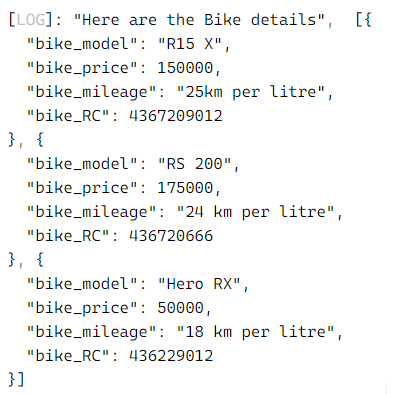


For negative values of i, it steps back from the end of the array. also we can use at(i) method that allows negative indexes.we can get element by its index, like arr.

If we shorten length manually, the array is truncated.The length property is the array length or, to be precise, its last numeric index plus one.The call to new Array(number) creates an array with the given length, but without elements. To be precise, it is actually not the count of values in the array, but the greatest numeric index plus one.įor instance, a single element with a large index gives a big length: The length property automatically updates when we modify the array. Generally, we shouldn’t use for.in for arrays. But still we should be aware of the difference. The speedup may only matter in bottlenecks.

The for.in loop is optimized for generic objects, not arrays, and thus is 10-100 times slower. So if we need to work with array-like objects, then these “extra” properties can become a problem. That is, they have length and indexes properties, but they may also have other non-numeric properties and methods, which we usually don’t need. There are so-called “array-like” objects in the browser and in other environments, that look like arrays. The loop for.in iterates over all properties, not only the numeric ones. Methods push/pop run fast, while shift/unshift are slow.Īlert( arr ) // Apple, Orange, Pearīut that’s actually a bad idea. And if you need arbitrary keys, chances are high that you actually require a regular object. Arrays are carefully tuned inside JavaScript engines to work with contiguous ordered data, please use them this way. Please think of arrays as special structures to work with the ordered data.


 0 kommentar(er)
0 kommentar(er)
